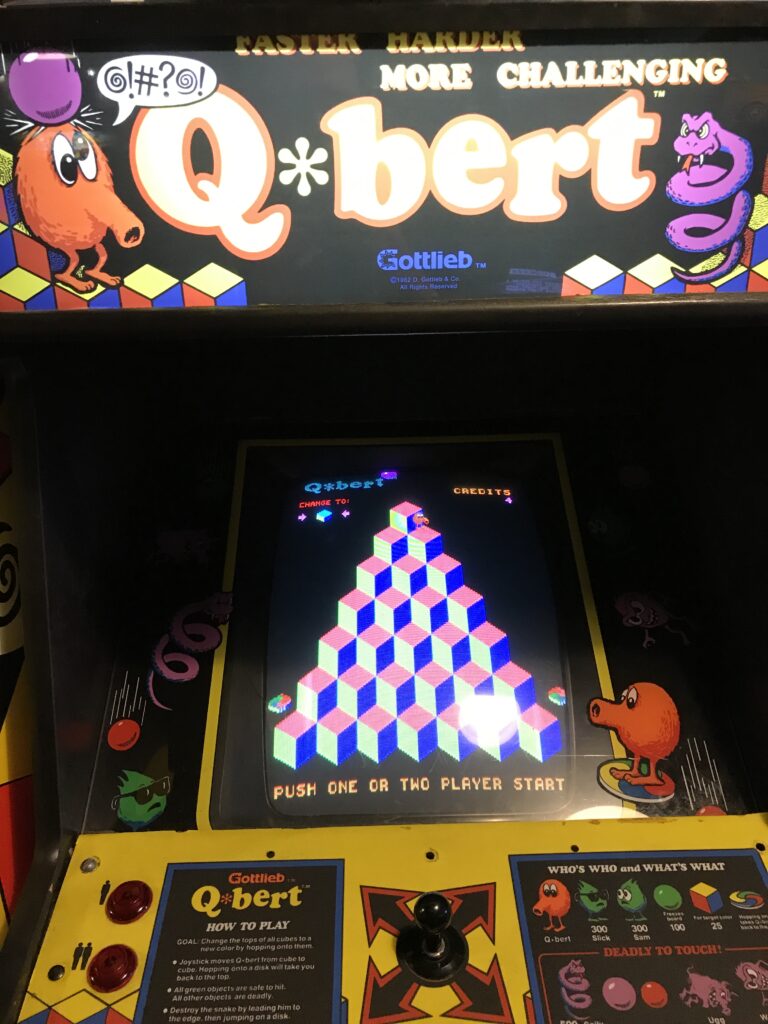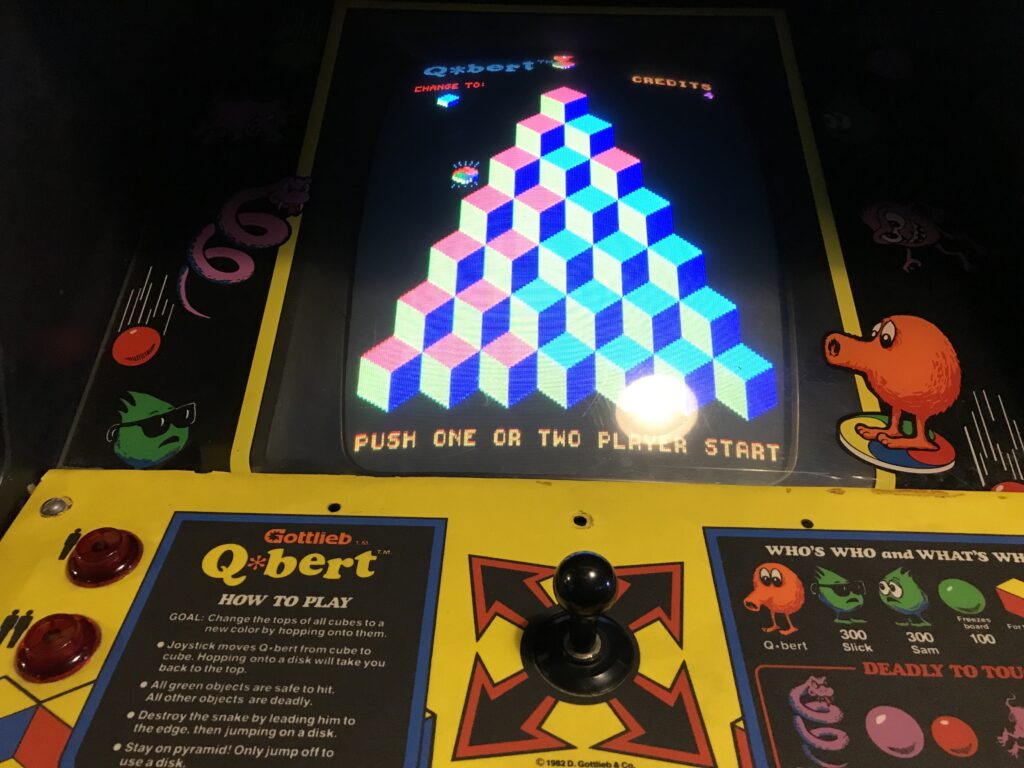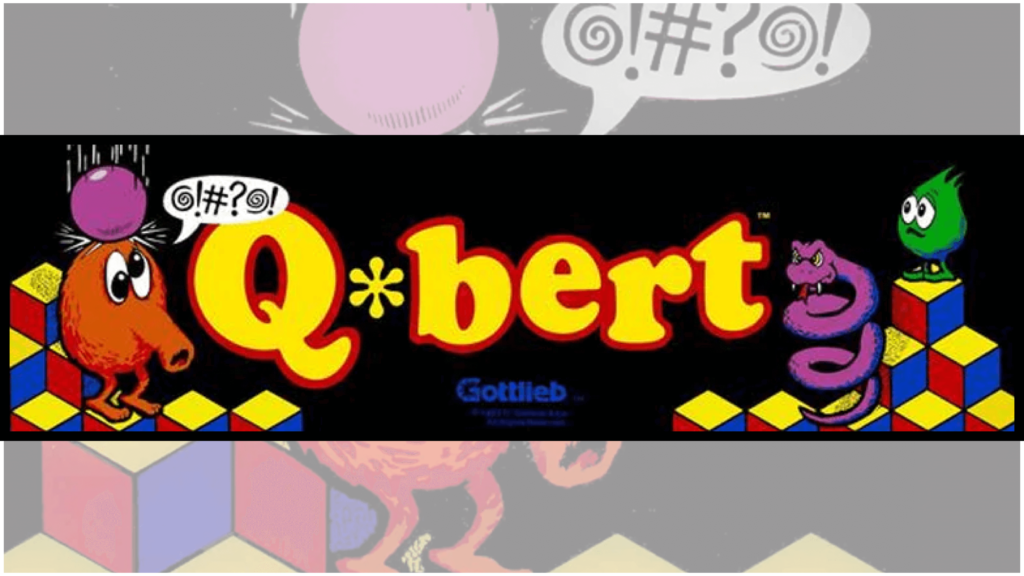Though not as mega-iconic as other late 70s and early 80s arcade mascots like Pac-Man or Space Invaders, it’s hard to deny the status to Q*Bert. The little orange… alien thingy?… has been around in the arcades for decades, hopping between isometric cubes with the best of them. Heck, Q*Bert even showed up in Disney’s Wreck-It Ralph, a movie that featured some of the most iconic video game characters of all time. I also just so happened to play the Playstation port/remake of the game, so what better time to look back at the arcade game?

Released in 1982, Q*Bert is a puzzle game that has you controlling the titular Q*Bert as he descends and scales a pyramid of cubes with a goal of changing each space he lands on to a specific color. It’s simple in concept, but later stages incorporate modifiers that up the challenge tremendously, including multiple enemies on screen, foes that change the color your cubes, and even some stages that require you to hit each space twice to get the correct color to show. It has an approachable gameplay method that is fun to pick up and start, but deviously gets you hooked before the game throws more difficult obstacles your way. In short, it’s precisely the type of gameplay hook to munch up all your quarters!
Q*Bert released when arcades were booming in the early 90s, and immediately stood out thanks to its bright colors and pseudo-3D visuals. Instead of moving up, down, left, or right, you move Q*Bert diagonally in said directions. Combined with the cube like areas you move through, the isometric 3D effect is achieved. I am not old enough to have experienced Q*Bert in arcades when it first released, but I can say even 10-15 years later, this one stands out among its peers. I was also kind of interested when I saw someone lose a round, and Q*Bert lets out what I can only think to be some sort of alien expletive as gibberish shows up on screen in a word bubble. And with that, an icon was born!
The Q*Bert arcade cabinet also adds a lot of flair that you otherwise wouldn’t get from games at the time. The controller overlay showcases each enemy and their names (as well as their score values, as achieving a high score was something people apparently cared about back then), which isn’t explained in the game itself. Also, you really need to read that little instruction panel so you understand only purple colored things defeat you, and green colored things can actually safely be collided with. This mechanic was present in the aforementioned Playstation remake, but does it tell you that anywhere? No it does not. Maybe it did in the manual, but I’m not about to read that some 20 years later…

The simplicity of Q*Bert’s design is what makes it stand the test of time. The game is now over 30 years old, and I’ll be damned if it isn’t still enjoyable to plop down that quarter and play a few rounds. Arcade games offered something you don’t see too often in video games these days: a simple concept that slowly builds to something more challenging yet still familiar to what you started out learning. The educated approach to player experience and development made it feel like one you could really try again and again and get better at each time.
But that’s probably how the developers wanted it, so you’d drop down more money each time, just to get to that next stage. Ugh, arcades were brutal some times…
Laters,
Jsick
Played at Galloping Ghost Arcade in Brookfield, IL 2019






